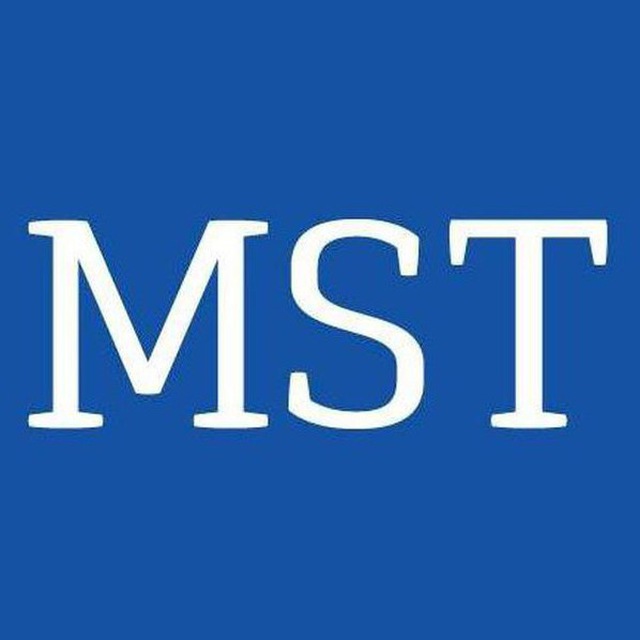
MST Company
Recent Posts
Our new big project
https://mstcompany.net/projects/payments/implementation-of-biometric-acquiring-for-vtb-bank-at-finopolis-2024
https://mstcompany.net/projects/payments/implementation-of-biometric-acquiring-for-vtb-bank-at-finopolis-2024
Not so long time ago, we tell that our new JoinCORE kernel had successfully passed certification in NSPK (MIR Payment System). Now we are happy to announce that we have successfully completed SoftPOS kernel certification.
https://mstcompany.net/about/news/ps-mir-kernel-certification-for-softpos
https://mstcompany.net/about/news/ps-mir-kernel-certification-for-softpos
In one of our recent news, we told you about our whole-new EMV core, JoinCORE. A few months later, today, we are proud to announce that our JoinCORE has been successfully tested for compliance with the MIR payment system's standards.
https://mstcompany.net/about/news/joincore-gets-certified-by-mir-payment-system
https://mstcompany.net/about/news/joincore-gets-certified-by-mir-payment-system
We recently created a design code and the application for an operator that provides access to business lounges at airports throughout Russia.
Read our new case: https://mstcompany.net/projects/software-development/cash-application-for-rus-priority-company
Read our new case: https://mstcompany.net/projects/software-development/cash-application-for-rus-priority-company
How about some useful content? Check our new article about big data. The article doesn't require any special knowledge and gives a general idea of the technology.
https://mstcompany.net/blog/a-few-words-about-big-data
https://mstcompany.net/blog/a-few-words-about-big-data
Just released our brand new terminal management system JoinTMS 2.0. Absolutely new TMS made from a scratch. JoinTMS 2.0 is a scalable cloud-based TMS with ML based predictive analytics that allows to remotely manage POS terminals of a various brands.
Read our latest press-release: https://mstcompany.net/about/news/jointms-2-0-a-cloud-based-pos-terminal-management-system
Read our latest press-release: https://mstcompany.net/about/news/jointms-2-0-a-cloud-based-pos-terminal-management-system
Specialists of MST Company have successfully completed the certification of cross-platform software for JoinPOS payment terminals and smart cash registers for compliance with the 3CardF POS protocol implemented in the 3CARD processing solution of the Software Systems and Technologies Company. Now all the Company’s payment solutions implemented based on the JoinPAY fintech platform, as well as banks operating on the 3CARD solution can use JoinPOS.
https://mstcompany.net/about/news/joinpos-is-certified-for-compliance-with-the-3cardf-pos-terminal-protocol
https://mstcompany.net/about/news/joinpos-is-certified-for-compliance-with-the-3cardf-pos-terminal-protocol
Our first CV project. We continue to expand our competencies.
https://mstcompany.net/projects/software-development/qr-code-recognition-in-streaming-video
https://mstcompany.net/projects/software-development/qr-code-recognition-in-streaming-video
New article in our blog. Talking about CI/CD and Jenkins.
https://mstcompany.net/blog/improving-development-quality-with-jenkins
https://mstcompany.net/blog/improving-development-quality-with-jenkins
Last week we completed a very interesting project. Classical algorithms could not cope with tens of millions samples. There was only one solution - a neural network.
https://mstcompany.net/projects/software-development/a-neural-network-for-comparing-fingerprints
https://mstcompany.net/projects/software-development/a-neural-network-for-comparing-fingerprints
In this article, we will consider the limits used nowadays in the processing of transactions using contactless cards (Contactless Limits). We will also give brief recommendations from the Payment systems on how to configure them. Note that those are exactly the limits configured on the POS terminals. We will not consider the card application limits in this article.
https://mstcompany.net/blog/contactless-limits-of-pos-terminals
https://mstcompany.net/blog/contactless-limits-of-pos-terminals
Software Package for Forced Draft Units Design Calculations for «KMZ» JSC
We have completed the development and implementation of the software package for forced draft unit design calculations for «KMZ» JSC. Basically, the project was an extensive research work, because the modules of the software package included a design calculations library that had to perform various forced draft unit design calculations. Each customer’s request is different. Therefore it is impossible to choose one fan (FDU - forced draft units) that is the best possible for each case. We always have to evaluate various factors, such as dimensions, efficiency, generated noise, engine power, weight, rotation speed, price, operating cost and service life of the fan. This design calculations library helps to pick a fan that is the best for a customer.
https://mstcompany.net/projects/software-development/software-package-for-forced-draft-units-design-calculations-for-kmz-jsc
We have completed the development and implementation of the software package for forced draft unit design calculations for «KMZ» JSC. Basically, the project was an extensive research work, because the modules of the software package included a design calculations library that had to perform various forced draft unit design calculations. Each customer’s request is different. Therefore it is impossible to choose one fan (FDU - forced draft units) that is the best possible for each case. We always have to evaluate various factors, such as dimensions, efficiency, generated noise, engine power, weight, rotation speed, price, operating cost and service life of the fan. This design calculations library helps to pick a fan that is the best for a customer.
https://mstcompany.net/projects/software-development/software-package-for-forced-draft-units-design-calculations-for-kmz-jsc
We bring to your attention our next article on «EMV Transaction flow» that will cover the command to READ RECORDS. In this article, we will look into the examples of how the data of Mastercard chip card is read.
Let us remind you that the stages of EMV Transaction Flow described by us in the previous articles are as follows:
1. ATR
2. Select (1PAY.SYS.DDF01), an attempt of selection through the PSE. In case of denial:
3. Select (AID), selection through the PSA. If there is only one applet, the procedure is finished, moving to the next step. If there are two applets:
4. Application select in manual or authomatic mode.
5. Get Processing Options with or without PDOL.
The next step is APDU-R (response) to the command to Get Processing Options.
https://mstcompany.net/blog/acquiring-emv-transaction-flow-part-5-read-records
Let us remind you that the stages of EMV Transaction Flow described by us in the previous articles are as follows:
1. ATR
2. Select (1PAY.SYS.DDF01), an attempt of selection through the PSE. In case of denial:
3. Select (AID), selection through the PSA. If there is only one applet, the procedure is finished, moving to the next step. If there are two applets:
4. Application select in manual or authomatic mode.
5. Get Processing Options with or without PDOL.
The next step is APDU-R (response) to the command to Get Processing Options.
https://mstcompany.net/blog/acquiring-emv-transaction-flow-part-5-read-records
We bring to your attention our new article on «EMV Transaction flow». We will tell you about the characteristic features of the contactless cards’ work at the SELECT RESPONCE stage as well as the significant differences that are present in various Payment systems’ specifications of exchange via the contactless interface.
In the previous article, we have looked into the following stages of the EMV Transaction Flow:
• ATR
• Select (1PAY.SYS.DDF01), an attempt of selection through the PSE. In case of denial:
• Select (AID), selection through the PSA. If there is only one applet, the procedure is finished, moving to the next step. If there are two applets:
• Manual or automatic application select.
• Get Processing Options with or without PDOL.
We have also drawn attention to the fact that the work of the «contactless» chips is significantly different at this stage of exchange. And those differences are what we are going to talk about. First of all, this includes the contactless cards of Visa and Union Pay (qVSDC (Quick Visa Smart Debit Credit) specification and qUICS (Quick UnionPay Integrated Circuit Card Specification), respectively). For illustrative purposes, let us compare SELECT RESPONCE for Mastercard and Visa cards.
https://mstcompany.net/blog/acquiring-emv-transaction-flow-part-4-pdol-and-contactless-cards-characteristic-features-of-qvsdc-and-quics
In the previous article, we have looked into the following stages of the EMV Transaction Flow:
• ATR
• Select (1PAY.SYS.DDF01), an attempt of selection through the PSE. In case of denial:
• Select (AID), selection through the PSA. If there is only one applet, the procedure is finished, moving to the next step. If there are two applets:
• Manual or automatic application select.
• Get Processing Options with or without PDOL.
We have also drawn attention to the fact that the work of the «contactless» chips is significantly different at this stage of exchange. And those differences are what we are going to talk about. First of all, this includes the contactless cards of Visa and Union Pay (qVSDC (Quick Visa Smart Debit Credit) specification and qUICS (Quick UnionPay Integrated Circuit Card Specification), respectively). For illustrative purposes, let us compare SELECT RESPONCE for Mastercard and Visa cards.
https://mstcompany.net/blog/acquiring-emv-transaction-flow-part-4-pdol-and-contactless-cards-characteristic-features-of-qvsdc-and-quics
Acquiring: EMV Transaction Flow. Part 3: GET PROCESSING OPTIONS with and without PDOL
The third part of the «EMV Transaction flow» series covers the next stage of exchange between the device and the card, the GPO (Get Processing Options) command. Besides that, we will describe the differences in the implementation of the EMV cores in the cases of various Payment systems.
https://mstcompany.net/press-room/articles/acquiring-emv-transaction-flow-part-3-get-processing-options-with-and-without-pdol
The third part of the «EMV Transaction flow» series covers the next stage of exchange between the device and the card, the GPO (Get Processing Options) command. Besides that, we will describe the differences in the implementation of the EMV cores in the cases of various Payment systems.
https://mstcompany.net/press-room/articles/acquiring-emv-transaction-flow-part-3-get-processing-options-with-and-without-pdol
We would like to bring to your attention the next part of the series about the «EMV Transaction flow», where we will describe the first two stages of interaction between a card and a device, namely building the candidate list and selection of the application with which the further exchange will be performed. We will address two interfaces, namely the classical contact chip and the contactless chip. We will also describe the objects of the card’s applications and the configurations of the device that are engaged in the exchange.
https://mstcompany.net/press-room/articles/acquiring-emv-transaction-flow-part-2-pse-and-aid-candidate-list-and-application-selection
#emv#ATR#ATS#PSE#AID
https://mstcompany.net/press-room/articles/acquiring-emv-transaction-flow-part-2-pse-and-aid-candidate-list-and-application-selection
#emv#ATR#ATS#PSE#AID
Acquiring: EMV Transaction Flow. Part 1: Interfaces and Bases of the APDU
In this series of articles, we will try to tell as simply and clearly as possible what happens between the card and the device when a purchase is made through a POS terminal or when an ATM is used. Let us consider one by one all the steps of the exchange between a chip card and a device. I.e., we will tell you about the thing that is commonly called «EMV Transaction flow». The first part deals with the review of the exchange interfaces and the basic principles of operation of the APDU format.
https://mstcompany.net/press-room/articles/acquiring-emv-transaction-flow-part-1-interfaces-and-bases-of-the-apdu
#APDU#EMV#POS#MST#JOINPAY#ATM
In this series of articles, we will try to tell as simply and clearly as possible what happens between the card and the device when a purchase is made through a POS terminal or when an ATM is used. Let us consider one by one all the steps of the exchange between a chip card and a device. I.e., we will tell you about the thing that is commonly called «EMV Transaction flow». The first part deals with the review of the exchange interfaces and the basic principles of operation of the APDU format.
https://mstcompany.net/press-room/articles/acquiring-emv-transaction-flow-part-1-interfaces-and-bases-of-the-apdu
#APDU#EMV#POS#MST#JOINPAY#ATM
In this article, we will consider the situations that arguably any merchant/acquirer/cardholder comes across, namely the technical failures and denial responses when using the cards. In addition, we will address the matters of SMS notifications and automatic reversals.
https://mstcompany.net/press-room/articles/acquiring-errors-automatic-reversals-sms-notifications
https://mstcompany.net/press-room/articles/acquiring-errors-automatic-reversals-sms-notifications
In this series, we will consider the process of authorization by bank card as well as the basic nodes and algorithms thereof: the exchange between the POS terminal and the bank processing as well as the information interaction between the acquirer, the payment system and the issuer. The first part of the series describes the exchange between the POS terminal and the bank processing.
Authorization by Bank Card, Protocols and Exchange Nodes. Part 1, «POS to HOST»
https://mstcompany.net/press-room/articles/acquiring-authorization-by-bank-card-protocols-and-exchange-nodes-part-1-pos-to-host
Authorization by Bank Card, Protocols and Exchange Nodes. Part 1, «POS to HOST»
https://mstcompany.net/press-room/articles/acquiring-authorization-by-bank-card-protocols-and-exchange-nodes-part-1-pos-to-host
In this article, we will tell you what capabilities the trading and banking POS terminals can or should have, and touch upon some aspects of the EMV certifications. This article is the logical follow-up of the first part of the series: «Acquiring: Types of POS-terminals (Classification of EMVCo and Payment Systems)».
https://mstcompany.net/press-room/articles/acquiring-terminal-capabilities
https://mstcompany.net/press-room/articles/acquiring-terminal-capabilities





